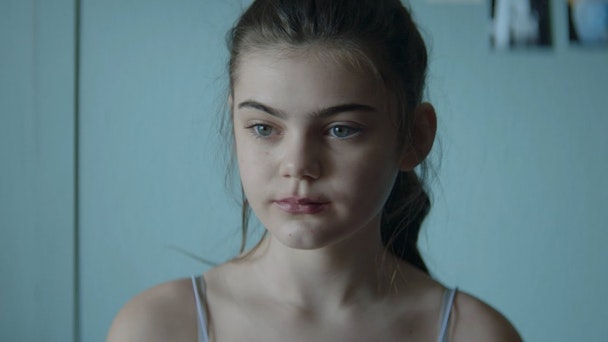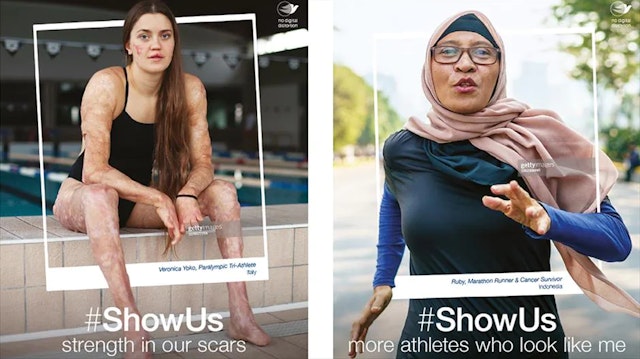Dove’s Alessandro Manfredi on ‘Reverse Selfie’ and speaking out against digital distortion
Dove knows that individual intervention isn’t enough if it is to disarm toxic beauty ideals – it needs to impact the ecosystem. As part of The Drum's Creative Transformation Festival, the brand's executive vice president explains Dove’s mission to build self-esteem through creativity.

Dove’s ‘Reverse Selfie’ struck a chord with concerned parents
The selfie obsession is a game. A game where whose post got the most ‘likes’ wins. It’s an excuse to get creative – even if it means distorting your face beyond recognition. This is how Dove’s executive vice-president Alessandro Manfredi describes it, but he insists: “It’s not a game anymore. We want to make the public aware that while it might look like a game, it’s not.”
Back in April, Dove caused a sensation when it brought out ‘Reverse Selfie’ – a campaign that was devised to tackle the detrimental effect that retouching apps and filters have on young girls’ self-esteem. And it struck a responsive chord, particularly with concerned parents and carers who had been worrying about the issue from the sidelines. Finally, someone had spoken up about digital distortion... hopefully before it becomes endemic.
“We’ve always been talking about digital distortion because we know it brings to life these impossible beauty ideals,” says Manfredi, pointing back to ‘Evolution’ – an ad that Dove brought out 15 years prior that documented how photoshop manipulates models, which in turn conjures up an unattainable image of what women should look like.
“We realized that 15 years later, this digital distortion is still happening now because of social media,” he explains. By the age of 13, 80% of girls distort the way they look online – a fact only made worse by the pandemic, which has pushed more people toward their screens.
At the front line of the fight against unrealistic beauty standards for almost two decades, under the ‘Dove Self Esteem Project’ banner, the brand has created some of the most impactful work in advertising, let alone the beauty industry. Manfredi puts this down to the fact that every human can relate to how unachievable beauty ideals affect self-esteem, meaning the work it does truly resonates.
To get to the root of the issue, Manfredi details how Dove works to find insight into what really damages self-esteem. He says the team uses a framework called the ‘Social-Ecological Health Model’, which is also used by health organizations. “If you treat body confidence like a health disease, then that’s the right model to address it,” he says. “This model says that you cannot just have individual interventions like workshops for young girls that arm them with tools to fight what’s wrong in society. You need to impact the ecosystem.”
This is why, he says, Dove talks about disarming toxic beauty ideals. “We look around with experts and with our agencies and ask: what are the things that are really damaging most girl’s self-esteem? This time it was digital distortion,” Mandredi explains. “But there are several others.”

Beyond digital distortion, Manfredi points to the issue of media representation and details how Dove tried to overcome it with its ‘#ShowUs’ campaign. “We created more than 10,000 stock images of very diverse beauty to do something about the problem,” he recalls on the project, which saw it partner with women and non-binary individuals. The bank of images has been made available for media and advertisers to use, to help offer a more inclusive vision of beauty.
Beyond representation, Manfredi identifies legislation as another area of interest, pointing to Dove’s work to overcome workplace bias against hairstyles in the US, after it found Black women report being 30% more likely to receive a formal grooming policy.
“We found out you can be fired if you wear your hair in a way your company deems not professional. For example, if you wore braids to work, you could be told it’s not professional and be legally fired in the US. We wanted to change that,” he recalls.
In 2019, Dove co-founded a ‘Crown Coalition’ of different NGOs. Together they created the ‘Crown Act’ to lobby US state governments to help protect women against discrimination based on race-based hairstyles by extending statutory protection to hair texture and protective styles such as braids, locs, twists and knots in the workplace and public schools. So far, it has actually made discrimination illegal in 12 states and counting. As Manfredi claims: “We’re going to go fully national. We’re very proud of that.”
Since launching the Dove Self Esteem Project back in 2004, Dove has supported 70 million people, with a goal of educating 250 million people by 2030. Manfredi says creativity will play a massive role in hitting its target. “It helps in the storytelling we create. Creativity is about finding the right insights. Psychologists point us at the issue but you really need to dig deeper,” he explains. “We could have addressed ‘Reverse Selfie’ in a much less insightful way and still talked about the problem.”
Beyond that, he says to reach 250 million, Dove needs to evolve the models of marketing. “We can’t just do it in the way we did it the previous year,” he argues. “We’re experimenting more because we need to reach young girls, not just in schools but in other contexts like gaming, which is a huge place to engage children.”
Dove’s executive vice-president Alessandro Manfredi spoke to The Drum as part of its Creative Transformation Festival. You can watch the full interview here. If this tickled your fancy, please visit the #CTFest hub where you’ll find plenty more where this came from.

